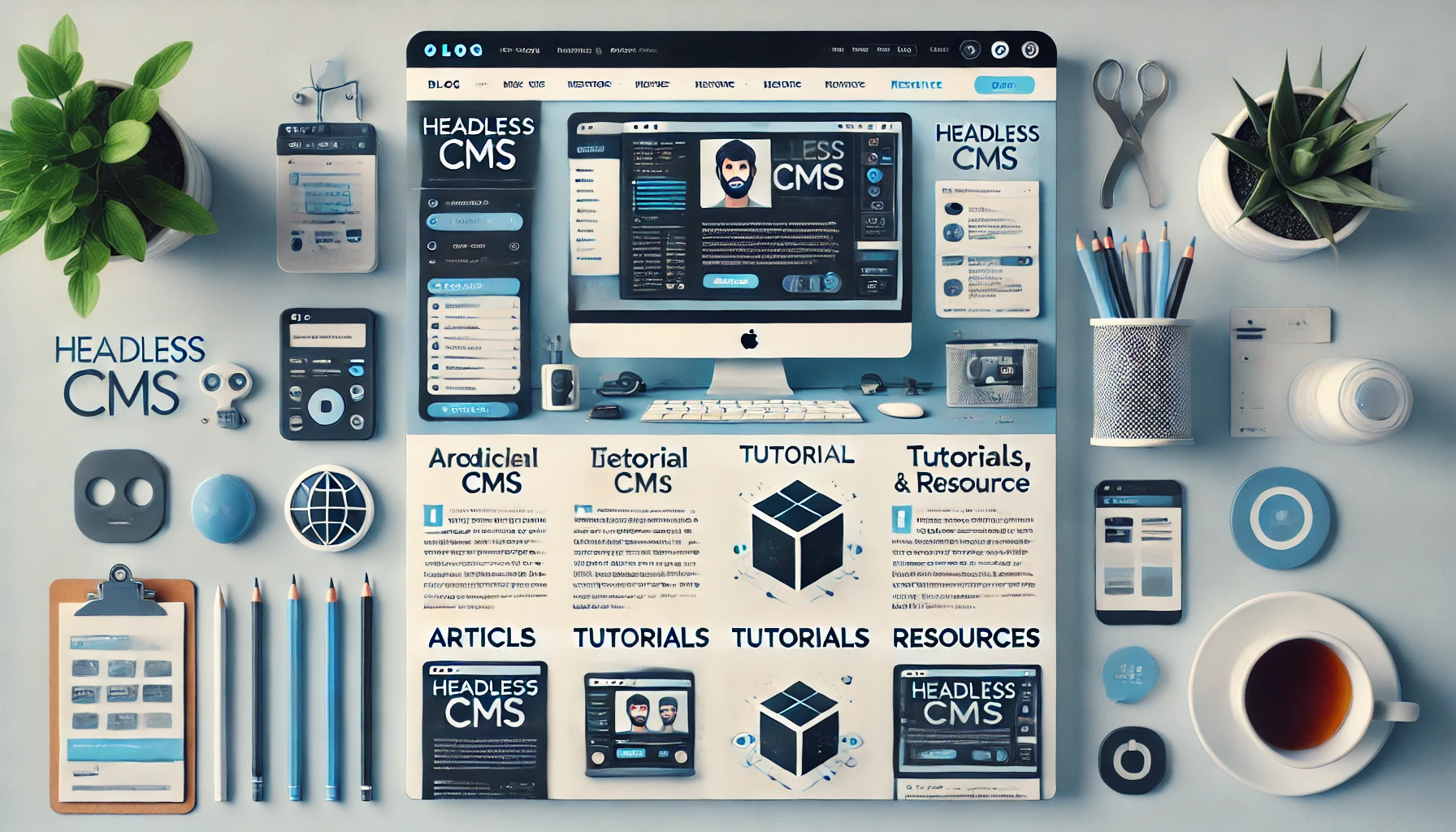A headless CMS—what is it exactly?
Written by William ElegeertJuly 9 2024

To maintain a website, a content management system (CMS) is often used. If, during its implementation, the decision is made to completely separate the content from the presentation, it is referred to as a headless CMS.
In standard CMS systems, content and presentation are combined in one system. In a headless CMS, content can be made available across various platforms via an API. Authors can easily reuse and distribute content across multiple channels, while developers have the freedom to make their own technological choices.
The Key Features of a Headless CMS
- Publishing on Multiple Channels
- Complete Separation of Frontend and Backend
Publishing on Multiple Channels
In traditional CMS systems, content is assembled using a WYSIWYG or block editor based on templates and published as a web page. With the rise of mobile devices and apps, it increasingly becomes apparent that such a standard CMS is too limiting. For instance, you might want to manage the content of a web page within the CMS itself. There is a general need to manage content centrally and easily publish it across multiple channels (omnichannel content distribution). This includes integrations with newsletter systems, social media, online ads, billboards, intranets, e-commerce platforms, point-of-sale systems, and wearables such as smartwatches and fitness trackers.
Complete Separation of Frontend and Backend
A headless CMS is characterized by the complete separation of the backend, where data is managed and processed, from the frontend, where user experience and presentation are designed. This means that content creation and management are decoupled from how the content is presented across different devices and channels. Through APIs, developers can easily retrieve and integrate content into various applications, websites, and other digital platforms, without having to worry about the backend infrastructure.
This architecture provides flexibility and scalability, as it allows development teams to work independently on the frontend and backend of a web application. The advantage is that adding new features and improving the user experience can be done more easily without needing to rebuild the entire application. The separation of frontend and backend also makes it easier to adapt the application to changing needs and manage the complexity of modernizing digital ecosystems.
Additional Benefits of a Headless CMS
- Security
- Speed
Security
An additional benefit of the separation between content and presentation is that content—often made available via a modern authentication method—is accessed through an API, thereby eliminating direct access to the backend. This enhances security by significantly reducing potential attack vectors. The risk of vulnerabilities such as cross-site scripting (XSS) and SQL injections, which are common in traditional CMS platforms, is greatly minimized with a headless architecture.
Moreover, a headless CMS often lacks a centrally accessible admin panel, further decreasing the likelihood of a successful breach.
Speed
The separation allows for the use of modern frontend technologies, such as React or Vue. These frameworks, known for their fast initial load times, offer features like loading only essential components and code splitting, where only the necessary code for a particular page is loaded.
By running the frontend independently of the backend and making API requests only when needed, unnecessary server requests are avoided, leading to a better user experience.
Caching API responses can also help reduce load times and minimize server load. Since static sites do not require dynamic server-side rendering, this reduces the load on your server, contributing to faster performance.
Popular Headless CMS Systems
The advantage of a headless CMS is that it can be fully tailored to the desired content distribution. Many well-known CMS systems such as Sitecore, Contentful, Contentstack, Sanity, Storyblok, and Strapi offer headless functionality and make content available via an API.
Laravel and Headless
At SowiesoDigital, we regularly use Laravel as a development framework, and it is highly suitable for developing websites and online applications. Laravel can serve as the backend for a headless setup, thanks to its built-in support for RESTful routing, middleware, and authentication.
When combined with headless systems like Twill, Strapi, and Statamic, a Laravel project can be transformed into a user-friendly and powerful content management system.
WordPress as a Headless CMS
What about WordPress? Originally developed as a traditional CMS for websites, WordPress can also be used as a headless CMS. While WordPress does not separate content and presentation by default, it can be configured to work in a headless mode using its built-in REST API. Instead of using a traditional WordPress theme, the frontend application fetches the content from the WordPress CMS.
By deploying WordPress in a headless configuration, you can leverage the content management capabilities that WordPress offers while applying modern frontend technologies and benefiting from improved security and speed.
Getting started with
SowiesoDigital?
Neem vrijblijvend contact op met onze specialisten om te sparren over de mogelijkheden voor de Google Analytics overstap.